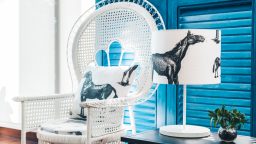Planters and pots are essential for housing your plants, but they also play a significant role in enhancing the overall look and feel of your space. Whether you’re looking to bring life to your home with a few indoor plants or decorate your patio with lush greenery, choosing the right planters and pots is key to showcasing your plants beautifully while ensuring their health. With so many styles, materials, and sizes available, it’s important to choose planters that fit your space, plant types, and aesthetic preferences. Here’s a guide to help you select the right planters and pots for your plants.
- Consider the Size of the Plant and Pot
The size of your plant and the pot you choose should be proportional to each other. A pot that is too small can stunt the growth of your plant, while a pot that is too large can cause water to sit around the roots, leading to root rot.
- Plant Size: Consider the full-grown size of your plant when choosing a pot. For most plants, the pot should be about 1-2 inches larger in diameter than the root ball. If you’re repotting, make sure to choose a pot that’s only slightly larger to avoid overwhelming the plant.
- Pot Depth: Ensure the pot is deep enough to accommodate the plant’s roots, especially for taller or larger plants. Some plants, such as trees and shrubs, require deeper pots to allow their roots to spread out properly.
- Choose the Right Material
Planters and pots come in various materials, each offering different benefits in terms of aesthetics, durability, and practicality. Your choice of material can also affect how often you need to water your plants.
- Plastic: Lightweight and affordable, plastic planters are a popular choice. They come in a wide range of colors and styles but may not be as aesthetically appealing as other materials. However, plastic pots retain moisture better, making them great for plants that prefer a more consistent level of moisture.
- Ceramic or Clay: Ceramic and terracotta pots are heavier and provide a more elegant, classic look. They are great for plants that require good airflow for their roots, such as succulents. However, ceramic pots may dry out more quickly, so you’ll need to water plants more frequently. They’re also more prone to cracking in extreme temperatures.
- Concrete: Concrete pots offer a modern, industrial look. They are durable and heavy, making them ideal for large plants or outdoor use, especially in windy areas. Concrete pots are also less likely to dry out quickly, but they can be more expensive and difficult to move around due to their weight.
- Wood: Wooden planters can add a rustic or natural aesthetic to your decor. They are typically made from durable wood like cedar or teak, which resists moisture and insects. Wood planters are ideal for outdoor settings but can require maintenance over time to protect them from weathering.
- Metal: Metal planters, often made from galvanized steel or copper, provide a sleek, contemporary look. They are highly durable and work well in both modern and industrial-style interiors. However, metal pots may heat up in direct sunlight, which can be harmful to plants, so they’re better suited for indoor use or shaded outdoor spaces.
- Fiberglass: Lightweight and durable, fiberglass planters resemble ceramic pots but are less prone to cracking. They are often used for large, statement plants and come in a variety of finishes, making them a versatile option for both indoor and outdoor spaces.
- Consider Drainage
Proper drainage is crucial for the health of your plants. Without it, excess water can pool at the bottom of the pot, leading to root rot and other issues. Be sure to choose pots that have drainage holes to allow excess water to escape. If your pot doesn’t come with drainage holes, you can either drill your own or use a liner or insert that allows the water to flow out.
- Drainage Holes: Most pots, especially those made of ceramic, terracotta, or plastic, will come with pre-drilled drainage holes. For plants that need well-draining soil, make sure the pot has at least one hole in the bottom.
- Drainage Trays: Use drainage trays or saucers under your pots to catch any excess water that drains out. This will help keep your floors clean and prevent water from damaging surfaces.
- Match the Style of Your Home
Planters and pots aren’t just functional—they can also enhance the aesthetic of your home. Choose pots that complement your overall decor style and reflect your personal taste.
- Modern/Minimalist: If you prefer a modern look, go for sleek, simple pots in neutral colors like white, black, or grey. Materials like concrete, metal, or fiberglass work well for contemporary spaces.
- Bohemian: For a more eclectic, boho style, choose planters with colorful patterns, macramé hanging pots, or ceramic pots with textured finishes. Earthy materials like rattan or wicker also fit well with this style.
- Traditional: Classic terracotta or ceramic pots in earthy tones complement more traditional or rustic interiors. Look for pots with subtle patterns or finishes for a timeless look.
- Industrial: For an industrial vibe, metal planters or concrete pots work well. Choose pots in darker tones or with a weathered finish for a raw, urban feel.
- Coastal: Light, airy, and beach-inspired decor pairs well with white, light blue, or natural woven baskets. Look for ceramic, wicker, or rattan pots for a relaxed, coastal look.
- Indoor vs. Outdoor Planters
When choosing pots, consider whether your plants will be indoors or outdoors, as this can affect the type of material and design that works best.
- Indoor Planters: For indoor plants, choose pots that are visually appealing and fit with your home’s decor. Indoor planters tend to be smaller and often come with decorative features like patterns, glazes, or intricate textures.
- Outdoor Planters: Outdoor pots need to be durable and weather-resistant. Look for planters made of materials like concrete, metal, or resin that can withstand outdoor elements like rain, sun, and wind. Additionally, consider larger planters for outdoor plants or gardens to allow for healthy root growth.
- Think About Mobility
If you plan to move your plants around or bring them inside during the colder months, consider the weight and mobility of your planters.
- Lightweight Planters: For easy mobility, choose lightweight materials like plastic, fiberglass, or resin. These are easy to move around when needed.
- Wheeled Planters: If you have large plants or heavy pots, consider using pots with built-in wheels or placing them on rolling plant carts. This makes it much easier to move large plants to different areas of your home or garden.
- Add Personal Touches
Finally, consider adding a personal touch to your planters and pots to make them truly unique and reflective of your personality.
- DIY Planters: If you enjoy DIY projects, consider making your own planters from materials like wood, concrete, or clay. Customizing your planters with paint, decorations, or stencils can give them a personal flair.
- Repurpose Containers: Get creative and repurpose containers you already own, such as old jars, mugs, or buckets, as plant pots. This is an affordable way to personalize your plant decor and add a touch of whimsy.
Conclusion
Choosing the right planters and pots is essential to creating a beautiful and functional space for your plants. By considering factors like size, material, drainage, style, and functionality, you can select the perfect pots that suit both your plants’ needs and your home’s decor. Whether you’re looking for sleek modern containers, rustic terracotta pots, or whimsical DIY creations, the right planters will not only enhance your plants’ health but also add charm and personality to your living space.





